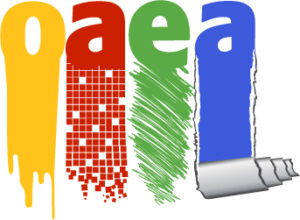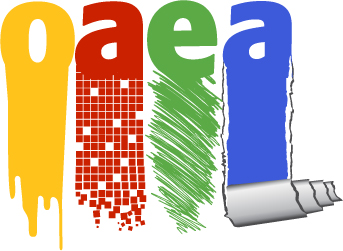Financial Literacy
Explore the Lessons and Materials
Elementary
- Gr-4-5-BLM-1-Water-Usage-at-Home-Placemat-Activity-Student.docx
- Gr-4-5-BLM-2-Terminology-for-Word-Wall-Teacher.docx
- Gr-4-5-BLM-3-Investigating-Websites-Assignment-Graffiti-Guidelines-Student.docx
- Gr-4-5-BLM-4-Investigating-Websites-Research-Topics-Student.docx
- Gr-4-5-BLM-5A-Calculating-Water-Usage-Sample-Family-Teacher-Student.docx
- Gr-4-5-BLM-5B-Comparing-Water-Costs-Student.docx
- Gr-4-5-BLM-6-Ways-to-Save-Water-Student.docxGr-4-5-BLM-7-Diminishing-Perspective-Student.docx
- Gr-4-5-BLM-8-Guidelines-for-Creating-a-Calendar-Student-Teacher.docx
- Gr-4-5-BLM-9-KWL-Anchor-Chart-Student.docx
- Gr-4-5-BLM-10-Checklist-for-the-Unit-Teacher.docx
- Gr-4-5-Teacher-Guide-Lesson-1-Conserving-Water-Unit-Description.docx
- Gr-4-5-Teacher-Guide-Lesson-2-Conserving-Water-Lesson-Description.docx
- Gr-4-5-Teacher-Guide-Lesson-3-Conserving-Water.docx
- Gr-4-5-Teacher-Guide-Lesson-4-Conserving-Water.docx
- Gr-5-BLM-1-Art-Skills-in-the-Workforce-Student.docx
- Gr-5-BLM-2-T-Chart-Exploring-Habits-and-Attitudes-Student.docx
- Gr-5-BLM-3-How-Artists-Earn-Their-Money-Student.docx
- Gr-5-BLM-4-Exit-Slip-What-I-Think-About-Being-an-Artist-Student.docx
- Gr-5-BLM-5A-Estimating-the-Costs-of-Art-Supplies-Teacher.docx
- Gr-5-BLM-5B-Estimating-the-Costs-of-Art-Supplies-Student.docx
- Gr-5-BLM-6-Estimating-Costs-for-Art-Projects-Student.docx
- Gr-5-BLM-7-Student-Assessment-of-Art-Project-Costs-Student.docx
- Gr-5-BLM-8-Word-Wall-Terminology-Teacher.docx
- Gr-5-Lesson-1-Pricing-the-Artist-Work.docx
- Gr-5-Lesson-2-Pricing-the-Artist-Work.docx
- Gr-5-Lesson-3-Teacher-Guide-Pricing-the-Artist-Work.docx
- Grade-06-Financial-Literacy-Title-Page.docx
- Outside-the-Box.doc
- Student-BLM-1-Venn-Diagram.docx
- Student-BLM-2-Culminating-Task.docx
- Student-BLM-3-Net.doc
- Student-BLM-4-Ticket-to-Lesson-3.doc
- Student-BLM-5-Calculating-A-Sale-Price.doc
- Student-BLM-6-Determining-A-Fair-Price.doc
- Student-BLM-7-Calculating-Participation-Rates.doc
- Student-BLM-8-Reflection.doc
- Student-BLM-9-Outside-the-Box-Same-as-Teacher-BLM-8.docx
- Teacher-BLM-1.doc
- Teacher-BLM-2-Exemplars.doc
- Teacher-BLM-4-Calculating-Ingredient-Price-Per-Box.doc
- Teacher-BLM-5-Determining-A-Fair-Price.doc
- Teacher-BLM-6-Calculating-Participation-Rates.doc
- Teacher-BLM-7-Student-Reflection-Feedback.doc
- Teacher-BLM-8-Outside-the-Box-Same-as-Student-BLM-10.docx
- Grade-07-Financial-Literacy-Title-Page.docx
- I-Shop-Therefore-I-Am.doc
- Student-BLM-1-Choice-Board.docx
- Student-BLM-2-Closet-Consumer-Exit-Slip.docx
- Student-BLM-6-Wearable-Art-Culminating-Activity.docx
- Teacher-BLM-3-Closet-Consumer-Exit-Slip.docx
- Teacher-BLM-4-I-Shop-Therefore-I-am-Artist-Examples.docx
- Teacher-BLM-5-Examples-of-Wearable-Art.pdf
- From-A-to-Zine.doc
- Grade-08-Financial-Literacy-Title-Page.docx
- Student-BLM-1-Guess-the-Sale-Price.docx
- Student-BLM-10-Zine-Self-Assessment.doc
- Student-BLM-3-Money-Trail-Placemat.docx
- Student-BLM-4-Art-and-Money-Exit-SlipJS.docx
- Student-BLM-7-Checklist-for-Interview-Questions.docx
- Student-BLM-8-Whats-a-Zine.docx
- Student-BLM-9-Zine-Example.pdf
- Teacher-BLM-11-Glossary-Word-Wall.docx
- Teacher-BLM-2-Guess-the-Sale-Price-Answers.doc
- Teacher-BLM-5-Art-and-Money-Exit-Slip-Feedback.docx
- Teacher-BLM-6-Example-of-Artist-Interview.docx
Secondary
This grade 9 Career Pathways in Art: Planning For Your Future unit assists students in realizing the range of possible careers available to them with a post-secondary education in the Visual Arts. Through the examination of the skills required to succeed in the arts, learning about financial literacy and the arts terminology, budgeting for post-secondary education, résumé and portfolio building as they relate to employment in the Visual Arts, students will gain practical financial literacy knowledge which will allow them to plan for the future.
Connections to Financial Literacy
Learning Goals
Files & Resources
Support
Connections to Financial Literacy:
Knowledge of skills developed in the study of Visual Arts that are applicable to a variety of careers;
Understand the variety of post-secondary routes associated with different career paths;
Planning for the future through budgeting for post-secondary education, as well as resume building.
Students will know, understand and/or be able to:
Articulate how skills acquired in Visual Arts, like creative problem-solving skills, can be valuable in a number of professions, both in and out of the art community. Understand the post-secondary pathways required for a chosen career in. or related to, the arts. Budget for post-secondary education. Demonstrate their knowledge of career and volunteer opportunities available to youth looking for relevant experience on their résumés.- AVI1O-BLM-1-Careers-Requiring-an-Art-Background-Student-Resource.pdf
- AVI1O-BLM-10-Community-Art-Financial-Plan-Student-Resource.pdf
- AVI1O-BLM-11-Careers-In-Art-Poster-Student-Resource.pdf
- AVI1O-BLM-2-Exit-Slip-Careers-of-Interest-Student-Resource.pdf
- AVI1O-BLM-3-Exploring-Arts-Careers-Student-Resource.pdf
- AVI1O-BLM-4-Presentation-Assessment-Rubric-Student-Resource.pdf
- AVI1O-BLM-5-Portfolio-Checklist-Student-Resource.pdf
- AVI1O-BLM-6-Collaborative-Community-Art-Work-Proposal-Student-Resource.pdf
- AVI1O-BLM-7-Resume-Template-Student-Resource.pdf
- AVI1O-BLM-8-Resume-Assessment-Checklist-Student-and-Teacher-Resource.pdf
- AVI1O-BLM-9-Terminology-Teacher-Resource.pdf
- AVI1O-Educators-Guide-Career-Pathways-in-Art-Planning-for-Your-Future-Lessons-Teacher.pdf
The grade 10, Fundraising and Valuing Your Work unit introduces students to practical understanding of key financial terms relevant to costing art work and budgeting for an event or show. The step by step easy to follow guidelines facilitate a clear understanding of the economic aspects of arts fundraising events with an achievable goal or target. The unit examines the social and the ethical implications of the financial decisions involved in planning a fundraiser. The unit promotes active citizenship as students can have the opportunity to plan and execute an actual fundraising event.
Connections to Financial Literacy
Learning Goals
Files & Resources
Support
Connections to Financial Literacy:
Understanding of key financial terms relevant to costing art work and budgeting for an event or show; Key budgeting terms related to revenue, expenses, needs and wants; Social and ethical implications of financial decisions of planning a fundraiser; Active citizenship as students plan and execute a fundraising event; Understanding the economy as it pertains to fundraising with an achievable goal or target.Students will know, understand and/or be able to:
Understand and demonstrate a variety of ways to display art in a fundraising setting; Be able to define fundraiser, and will be able to distinguish and creatively plan for a variety of fundraising activities;[ Understand terms related to budgeting for fundraising events, as well as for valuing their art work, whether for sale in relation to a career, or for a fundraising event; Understand the roles involved in creating art or planning a fundraising event, identifying career opportunities in these areas; Understand the legal and ethical issues and planning required for a successful fundraising event designed for students’ school and/or broader community.- AVI2O-BLM-1-Fundraising-and-Financial-Terminology-Teacher-Resource.pdf
- AVI2O-BLM-2-Fundraising-and-Financial-Terminology-Student-Resource.pdf
- AVI2O-BLM-3-Well-Known-Not-for-Profit-Agencies-in-Ontario-Teacher-and-Student-Resource.pdf
- AVI2O-BLM-4-Pricing-your-Art-Work-Student-Resource.pdf
- AVI2O-BLM-5-Fundraising-Projected-Income-Statement-Student-Resource.pdf
- AVI2O-BLM-6-Fundraising-Income-Statement-Student-Resource.pdf
- AVI2O-BLM-7-Sample-Silent-Auction-Bid-Form-Student-Resource.pdf
- AVI2O-BLM-8-Fundraising-Awareness-Rubric-Student-Resource.pdf
- AVI2O-BLM-9-Fundraising-and-Financial-Literacy-Quiz-Student-Resource.pdf
- AVI2O-Grade-10-Educators-Guide-Financial-Literacy-and-Art-Valuing-Art-and-Fundraising.pdf
In grade 11, The Business of Art – Case Studies unit students will be introduced to a collection of interviews with professional artists who work in the applied arts including visual, media and craft-based related fields. By watching and listening to these interviews students will be exposed to the unique qualities of the business of art. Students will gather knowledge and experience related to financial considerations of working in an art-related field as they consider the market value of products and services at the heart of arts-based careers. In this exploration students will come to understand the relationship between the artist and the consumer including how art has become an essential part of business development. The unique social responsibilities of the artist in business and practice including sustainable and responsible personal financial planning such as budgeting, saving and investing as well as health and financial security in the long term will all be investigated.
Connections to Financial Literacy
Learning Goals
Files
Videos
Support
Connections to Financial Literacy:
Discussion of market value related to products and services and how this relates to arts-based careers Understanding the consumer and the relationship between the artist and the consumer including how art is now so essential for business Sustainable and responsible personal financial planning such as budgeting, saving and investing Sustainable and responsible business financial planning such as budgeting, saving and investing (including ethical/best practice) The unique qualities of the Business of Art The unique social responsibilities of the artist in business and practice Health and financial security in the long termStudents will know, understand and/or be able to:
income and earning streams self-employment budgeting risks and rewards pensions insurance taxes planning ahead how the financial system works from the point of view of those working in the arts field the difference between wants and needs consumer awareness and advertising fraud and its consequences future consequences of financial decisions how to plan for life after high school and beyondVideo Resources
- AVI3M1-BLM-1FinancialLiteracyQuestionsforProfessionals-Student-Teacher-Resource.pdf
- AVI3M1-BLM-2-Lets-Consider-a-Career-in-the-Visual-Arts-Student-Resource.pdf
- AVI3M1-BLM-3-Quotes-about-Ontarios-Creative-Cluster-Student-Resource.pdf
- AVI3M1-BLM-4-CaseStudyAnalysisChart-Student-Resource.pdf
- AVI3M1-BLM-5-FinancialLiteracyinVisualArtsChecklist-Student-Resource.pdf
- AVI3M1-BLM-6-Financial-Literacy-in-Visual-Arts-Rubric-Student-Resource.pdf
- AVI3M1-BLM-7-The-Business-of-Art-Terminology-Worksheet.pdf
- AVI3M1-BLM-8-The-Business-of-Art-Terminology-Teachers-Answer-Key-Teacher-Resource.pdf
- AVI3M1-BLM-9-Financial-Literacy-the-Arts-Personal-Reflection-Student-and-Teacher-Resource.pdf
- AVI3M1-Educators-Guide-Financial-Literacy-Unit-The-Business-of-Art.pdf
In the grade 12, Launching a Career in the Arts – Case Studies unit students will be introduced to a collection of videos depicting young and emerging professionals who work in visual or media art related fields. Through video and audio interviews, these art professionals will share their knowledge and experiences working in the arts fields. By watching and listening to these interviews, students will gather knowledge related to financial considerations in arts-based careers and form personal opinions about careers in the arts. The real-life financial aspects of being an artist or working in an art-related field are investigated through a discussion of the market value related to products and services essential to our consumerist society. For grade 12 students, the steps required to prepare for a formal education in the arts and an eventual career in the arts or cultural sector are studied. Practical concerns involved in personal financial planning such as budgeting, saving and investing will engage students as they advance into a post-secondary educational setting.
Connections to Financial Literacy:
- Discussion of the market value related to products and services and how this relates to arts-based careers
- Understanding of the consumer and the relationship between the artist and the consumer including how art is now so essential for business
- Preparation for the steps involved to following a formal education in the arts and an eventual career in the arts and cultural sector
- Education about sustainable and responsible personal financial planning such as budgeting, saving and investing
- Knowledge of sustainable and responsible business financial planning such as budgeting, saving and investing (including ethical/best practice)
- Presentation of health and financial security in the long term
Students will know, understand and/or be able to communicate about:
- Understanding strategies and steps involved in the transition to work
- Be about to understand the difference between wants and needs
- Be able to answer the question: What is a living wage?
- credit and borrowing
- risks and rewards
- compound interest
- pensions
- insurance
- taxes
- planning ahead
- AVI4M1-BLM-1-ResearchReadinessSurvey-Student-Teacher-Resource.pdf
- AVI4M1-BLM-2-TerminologyWorksheet-Student-Resource.pdf
- AVI4M1-BLM-3-TerminologyWorksheet-Answer-Key-Teacher-Resource.pdf
- AVI4M1-BLM-4-WheredoIstandwithmyplansforthefuture-Student-Resource.pdf
- AVI4M1-BLM-5-FinancialLiteracyQuestionsforProfessionals-Student-Resource.pdf
- AVI4M1-BLM-6-CaseStudyAnalysisChart-Student-Resource.pdf
- AVI4M1-BLM-7-FinancialLiteracyinVisualArtsChecklist-Student-Resource.pdf
- AVI4M1-BLM-8-Financial-Literacy-in-Visual-Arts-Rubric-Student-Teacher-Resource.pdf
- AVI4M1-BLM-9-Personal-Reflection-Student-Resource.pdf
- Financial-Literacy-Education-Guide.pdf
Tagged resources

